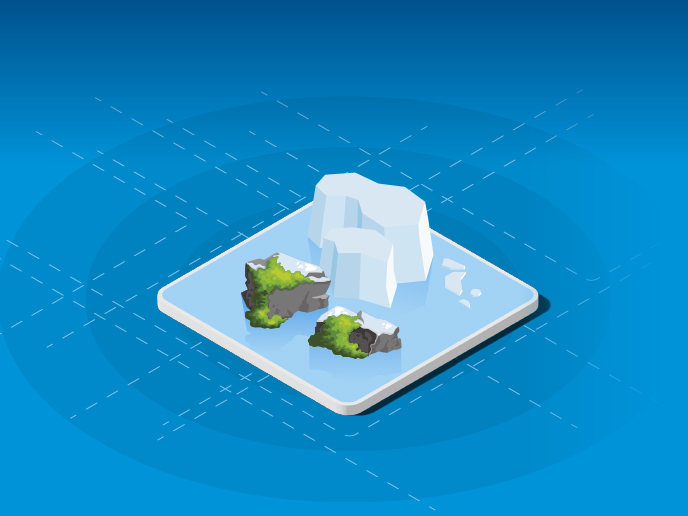IV - Investigating the carbon potential of new polar ecosystems
The aim is to develop a model that can inform policymakers and managers of the effects of human actions on the blue carbon reservoirs.
Marja Koski, SEA-Quester project coordinator
Climate change is causing dramatic shifts in the environment and ecology of polar regions, leading to the creation of new marine ecosystems. “Novel ecosystems are those that emerge at areas which have previously been permanently covered in ice – and include both coastal habitats such as macroalgal beds, and open ocean areas where phytoplankton bloom dynamics might change,” explains Marja Koski, professor at the National Institute of Aquatic Resources, Technical University of Denmark (DTU Aqua) and SEA-Quester project coordinator. Novel ecosystems can also appear when the distribution of species changes due to shifting environmental conditions. The peak distribution of many species is moving away from warmer temperatures at lower latitudes, towards the poles, which can result in new combinations of species within communities. The EU-funded SEA-Quester project is setting out to study these new ecosystems and to assess their carbon storage, export and sequestration. The team will conduct a series of ocean-going cruises, as well as laboratory experiments, followed by research and analysis of the implications of novel polar ecosystems for marine biodiversity, and their role in the global climate system. SEA-Quester will explore new ecosystems in several focus areas in the Arctic (East and West Greenland, the Fram Strait and Svalbard), sub-Arctic (Baltic Sea) and Antarctic (South Georgia and the Southern Ocean). Researchers will use existing data sets, new observations and modelling, undertake several cruises in East Greenland, Svalbard and other locations, and carry out shore based work, for example in Greenland’s Disko Bay. “By combining these data sets, we will build an understanding of blue carbon stocks, the residence times of carbon in these different reservoirs, and how environmental change affects them,” adds Koski. These insights will then inform models and provide input to Earth system models. “The aim is to develop a model that can inform policymakers and managers of the effects of human actions on the blue carbon reservoirs,” says Koski. “We hope the results will contribute to a better understanding of how blue carbon contributes – or doesn’t – to CO2 removal.”
Keywords
blue carbon, ocean-climate-biodiversity nexus, climate mitigation and adaptation, natural carbon sequestration, ecosystem services, marine biodiversity, ecosystem functioning, functional ecology, maritime spatial planning, ecosystem-based approach



